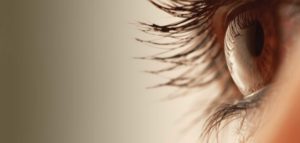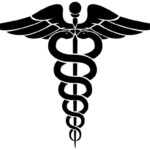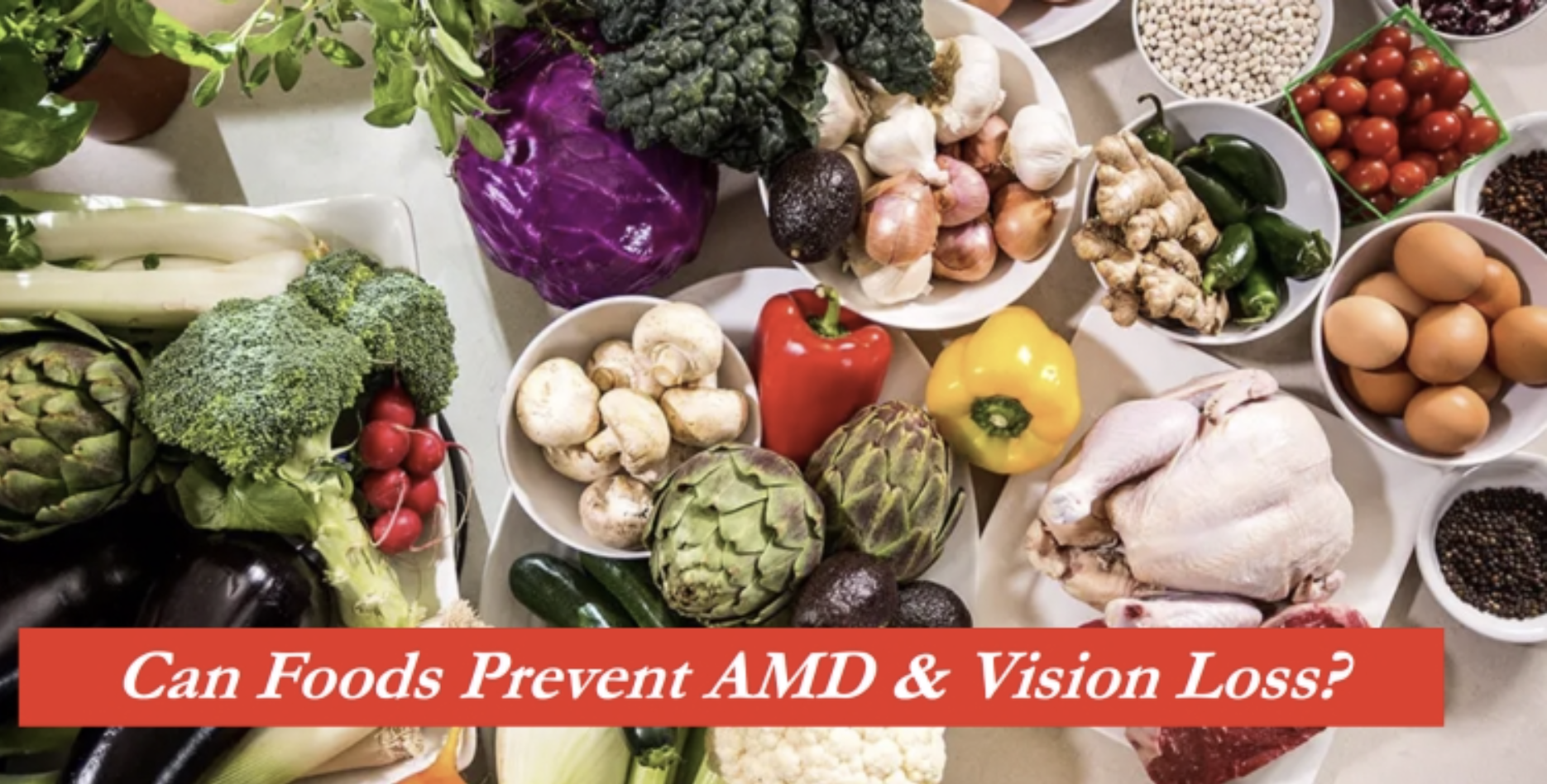Part I: Unveiling the Hypothesis
Can Ancestral Diets Actually Prevent and Treat Macular Degeneration?
by Chris A. Knobbe, MD
(This is Chapter One of Dr. Knobbe’s book, Ancestral Dietary Strategy to Prevent and Treat Macular Degeneration)
“Let food be thy medicine and medicine be thy food.”
— Hippocrates (460 – 370 B.C.)
I would like to tell you that I set out on a mission many years ago to discover the cause, and therefore, the prevention and treatment for age-related macular degeneration (AMD). But, I didn’t. I discovered what I firmly believe to be the cause, serendipitously. That’s right. I mostly stumbled onto it, albeit in the midst of a four-year trek I had been on to learn as much as I could about nutrition. Let me come back to that a bit later.
As I know you’re anxious to hear it, let me immediately unveil the hypothesis that I will proffer in this book, as it leads us not only to a logical and rational strategy for prevention of AMD, but to its treatment as well. Submitted for your consideration, an alternative hypothesis for the cause of macular degeneration:
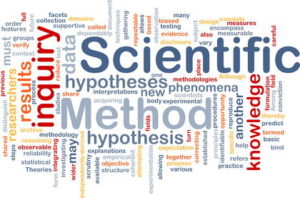 Hypothesis: The ‘displacing foods of modern commerce’ are the Primary and Proximate Cause of Age-Related Macular Degeneration.
Hypothesis: The ‘displacing foods of modern commerce’ are the Primary and Proximate Cause of Age-Related Macular Degeneration.
Corollary: Ancestral Diets Prevent AMD (and may reverse early AMD).
In this book, I will argue that the condition of AMD is, first and foremost, entirely preventable, through any variety of ancestral diets. The term “ancestral diets” refers to the traditional diets of our ancestors – and there are numerous examples that are extremely varied, but they all share certain commonalities when it comes to nutrient density – and none of them contained man-made, processed foods.
Secondly, I will argue that, even once begun, the earliest stages of AMD are often fully or partially reversible, while moderate stages of disease may be stabilized, with proper diet and lifestyle changes. When AMD is not reversible, I will submit to you that preventing progression may be common for those who will alter their diet and lifestyle according to those of our ancestors. I will also review exactly what that means, leaving few if any questions in your mind about how and what to eat in order to save your sight.
Thirdly, I will argue that this condition we now call “age-related macular degeneration,” is really diet-related macular degeneration. Just about eighty-five years ago and prior, the condition we call age-related macular degeneration either did not exist, or was extraordinarily rare. An abundance of evidence will support this claim and I will review that in significant detail. So the obvious question becomes: If AMD did not exist just eighty-five to one hundred years ago, how can we possibly draw the conclusion that it is “age-related”? It is therefore, axiomatic, that we draw the conclusion that something in our environment has caused the condition. That something – I intend to show – is our diet.
Fourth, I will demonstrate that there is a dose-response relationship between the consumption of the ‘displacing foods of modern commerce’, which equate to man-made, processed, nutrient-deficient foods, and the incidence and prevalence of AMD. The evidence shows that, although certain ethnic groups have a lower prevalence of AMD, their prevalence of disease rises rapidly and exponentially once they begin to consume the ‘displacing foods of modern commerce’. Furthermore, it is evident that the greater the consumption of these nutrient-deficient, processed, displacing foods, the greater the risk of AMD and its progression.
Fifth, I will conclusively and very carefully review and demonstrate all of the major elements of the “perfect storm,” that have resulted not only in AMD, but a plethora of other conditions often referred to as the “diseases of Western influence.” This perfect storm, orchestrated through numerous insults to old and even ancient dietary traditions that had sustained us in exuberant and abundant health for thousands of years, has caused suffering, disease, and death in colossal proportions. AMD is one of these diseases.
Sixth, I will show that, at both the individual and population level, it is impossible to have exuberant and abundant health without plenty of whole, natural, unprocessed foods, preferably organic. Alternatively stated, the ‘displacing foods of modern commerce’ – sooner or later — rob us of our once vibrant health and may also result in numerous catastrophic diseases, including AMD.
Seventh, I will review the fact that it is virtually never the healthiest approach to micro-manage diets that are substantially insufficient in proper whole foods, with man-made, synthetically derived nutrients, such as multi-vitamin/multi mineral supplements. The research conclusively shows that this practice is generally not only not beneficial, but it is detrimental to our health. I will review this in some detail, but suffice it to say that taking multivitamin/multi-mineral supplements, may possibly help a minority of patients with AMD, while hurting all the rest. Furthermore, I will show that everyone will benefit to a much greater degree by avoiding supplements, and enriching their diet with naturally produced foods.
Eighth, I will spell out exactly what foods we should consume to prevent macular degeneration, as well as specifically which ones not to consume. Both are critical to our health – and an abundance of tradition and science supports this concept.
Ninth, I will review the “sacred foods,” which may very well be absolutely critical in helping to prevent and treat AMD — possibly helping to reverse the earliest stages of disease. These sacred foods are the ones that definitely helped to maintain so called “primitive” societies in exuberant health, while preventing diseases like macular degeneration.
Finally, whole food nutrition, with all its associated natural vitamins, minerals, phytonutrients, polyphenols, amino acids, fatty acids, etc., is unquestionably the key to vibrant health and immunity to a vast array of disease. Densely nutritious diets that do not include the ‘displacing foods of modern commerce’ not only prevent AMD, but they prevent and treat a plethora of other diseases as well, including heart disease, stroke, diabetes, hypertension, blood lipid disorders, metabolic syndrome, numerous cancers, Alzheimer’s disease, dementia, gout, ulcerative colitis, Crohn’s disease, irritable bowel syndrome, Autism, ADHD, depression, osteoarthritis, inflammatory arthritis, numerous inflammatory disorders and autoimmune disorders, including multiple sclerosis, rheumatoid arthritis, and many, many more.
From this introduction, let me follow-up by stating that AMD:
- Is a multifactorial disease, not unlike heart disease, stroke, or diabetes mellitus
- Generally follows a linear progression, based on the gestalt of a person’s nutrition and lifestyle, over a lifetime or at least several decades of time
- Is the end-result of numerous, highly complex interactions of highly intricate metabolic pathways, which cannot be reduced to simple terms or treatments (e.g., “we need more synthetic vitamins, zinc, etc.”)
- Requires an integrated hypothesis that connects broad-based nutrition (i.e., entire diets, over decades of time) with end results (i.e., development of AMD or lack thereof)
- Must be treated with a multi-pronged therapeutic approach, which includes removal of the ‘displacing foods of modern commerce’, supplanted with the consumption of nutrient-dense foods.
In follow-up to these points, let me also submit that, in this book, I will proffer biologically plausible mechanisms whereby processed food consumption may produce the pathophysiologic processes leading to macular degeneration.
Since this chapter is both introduction and eye-opener, no pun intended, I’d like to begin by addressing the myth of this reductionist thinking about nutrition. What I am referring to is our widely held belief system, present only for the last few decades, that we can reliably enhance or repair our diet with multivitamin/multi-mineral supplements and/or isolated synthetic nutrients. This is seldom true. In 2003, David Jacobs, PhD, and Lyn Steffen, PhD, at the University of Minnesota, Institute for Nutrition Research, published a paper reviewing 58 studies providing evidence that real, whole, natural food positively influences health through complex, synergistic mechanisms that are truly beyond our reductionist thinking. In their own words, “There is considerable evidence for the existence of food synergy, the additive or more than additive influences of foods and food constituents on health.”[1] In essence, biological systems are generally far too complex for us to reduce into simpler terms.
To continue with the concept of reductionist nutrition versus food synergy, there’s also no such thing as “eye vitamins,” no more than there are “heart vitamins,” “liver vitamins,” “brain vitamins,” or any other organ specific vitamins. There is also no good substitute for consuming vitamins as they are found in nature. Natural, organic, unprocessed foods are “packaged” with innumerable cofactors, enzymes, minerals, phytonutrients, etc, the way Nature intended them. Every single cell of our bodies, essentially, depends on virtually all the vitamins, minerals, essential amino acids, fatty acids, cholesterol, and hundreds and even thousands of other nutrients and components – all of which are either found in, have their basis in, or are supported by, none other than… you guessed it, whole food.
What this means is that it really is an exercise in futility to assert that we need “vitamins that are good for” our heart, liver, eyes, etc. Sure, we do, and I will even review this concept regarding the eye later in the book. But the fact is, most every cell of our bodies requires virtually every single one of those nutrients, and by far and away the best way to get those nutrients is by consuming whole, natural, unprocessed foods. These foods literally supply thousands of nutritional components in perfect combinations, wrapped up in perfectly bio-available “packages.” Man-made, synthetic substitutions do not. Hence, their potential danger.
Here’s the beauty of what I have just reviewed. By eating right to save your sight, you’re simultaneously going to reduce your risk of a multitude of other diseases and you’re going to become tremendously more healthy. If you need to, you will lose undesirable weight. You will feel better and you will have more energy. Within 72 hours, you will have a reduced risk of heart disease and stroke, type 2 diabetes will begin to reverse, blood pressure will naturally begin to correct itself, blood lipid profiles will normalize (this doesn’t mean cholesterol will be lower), arthritis may improve or disappear, inflammatory conditions such as colitis and irritable bowel syndrome will improve or resolve, autoimmune disorders such as lupus, rheumatoid arthritis, and multiple sclerosis may improve or stabilize, and numerous other conditions will likely begin to abate.[2]
So just forget the notion that you’re eating right – just for your eyes, or for any other condition for that matter. You’re either eating right for everything, or you’re eating wrong for – pretty much — everything. That’s the beauty of this plan. It’s virtually impossible to consume a food that is good for one thing, and bad for another (with very rare exceptions, primarily genetic ones). It is true, but nevertheless, ridiculous, to say, “Oh, I shouldn’t have eaten that candy bar, because it’s bad for my hips.” Sure, the statement is true. But, the candy bar is not only bad for your hips, but it’s also bad for your heart, brain, liver, eyes, kidneys, pancreas, teeth, joints, etc., etc. Likewise, when you eat wild-caught sushi and salmon roe (eggs) for dinner, it’s not just good for your heart and eyes, it’s good for every single cell of every single organ in your entire body. Alright — so sushi is not your cup of tea, you say? No problem. There are plenty of other options.
Challenging the Prevailing Dogma for the Cause of AMD
The prevailing sentiment regarding the elusive etiology (cause) of AMD is repeated over and over in almost every publication that deals with the condition. The typical verbiage is well represented by the following examples, the first of which is taken from Albert & Jakobiec’s 1994 edition of Principles and Practice of Ophthalmology. In the chapter entitled “Age-Related Macular Degeneration: Epidemiology,” written by Kathleen Egan, MPH and Johanna Seddon, MD. Their candid statement reads, “Since the cause or causes of AMD are unknown, we lack the means for its prevention.”[3] This honest and forthright statement, made in 1994, remains true today.
If we go online for the latest reviews regarding AMD, the Mayo Clinic’s website (MayoClinic.org), written by “Mayo Clinic Staff.” Under “Causes” (for AMD) the publication reads as follows: “The exact cause of dry macular degeneration is unknown, but the condition develops as the eye ages.” The article continues, “Dry macular degeneration affects the macula – an area located in the center of your retina that is responsible for clear vision in your direct line of sight.” Next, under risk factors, the article reads as follows: “Factors that may increase your risk of macular degeneration include: Age, family history of macular degeneration, race, smoking, obesity, unhealthy diet, cardiovascular disease, and elevated cholesterol.”[4]
WebMD, in their review states, “age-related macular degeneration is more common in older adults… may be hereditary,” and lists “smoking, high blood pressure, high cholesterol, obesity, and being light skinned, female, and having a light eye color” as risk factors for AMD.[5]
Little has changed in regard to the theories and hypotheses regarding the cause(s) of AMD for many decades. To illustrate by example, let me review the writings of the historically prominent ophthalmologist and author, Sir W. Stewart Duke-Elder, MD. From 1927 through the 1960’s, Duke-Elder was a dominant force in both British and international ophthalmology. As editor-in-chief for the Duke-Elder Textbook of Ophthalmology series, which served most English speaking ophthalmologists around the globe during those decades, his writings and editing were both profound and prolific. In his 1941 edition of the series, Volume III, Diseases of the Inner Eye, some four pages is dedicated to the review of what was then referred to as “Senile Macular Chorio-Retinal Degeneration (Senile Macular Degeneration of Haab).” Duke-Elder, with regard to the cause(s) of this condition, states “While the sclerotic origin of senile macular degeneration is generally accepted, van der Hoeve (1918 – 20) considered that the action of light might be a contributing cause.”[6] By “sclerotic origin,” Duke-Elder was referring to atherosclerosis or “hardening of the arteries” that takes place specifically in the choroid, which is a layer of supportive vasculature beneath the retina (to be reviewed later).
In 1994, the same year I finished my ophthalmology residency training at the University of Colorado Health Sciences Center, in Denver, I purchased the latest definitive treatise on ophthalmology, which was Albert & Jakobiec’s Principles and Practice of Ophthalmology. This six volume, 5,200+ page, 400 pound gorilla, which requires a wheelbarrow to move (sorry, I digress – and the weight is embellished, but not the page count), has answers for most of the fundamental questions in ophthalmology. In the Basic Sciences volume of the set, in Chapter 109, “Age-Related Macular Degeneration: Epidemiology,” the introduction reads as follows:
“Age-related macular degeneration (AMD) is the leading cause of irreversible blindness in the United States among persons over age 50. As many as 15 million persons in this age group may be affected by AMD. Little is currently known concerning the cause or causes of this vision-threatening disease. Among current hypotheses are that ambient light and nutritional and cardiovascular factors are related to the onset and progression of AMD.” [7]
In the same series of Albert & Jakobiec’s ophthalmology textbooks, volume 2 of the series presents the chapter on the dry form of AMD. The subtitle of “Conclusions and Future Research,” reads as follows:
“Although fairly uniform descriptions of the nonneovascular features of AMD [dry AMD] have been presented, there still is little information on the cause or progression of these changes. Hopefully, current and future epidemiological studies will lead to better understanding of the pathogenesis [fundamental biological cause] of these changes. Interventional trials may allow us to understand what can be done to prevent the development of these changes in the first place or prevent progression to the visually disabling stage of atrophy or choroidal neovascularization [Wet AMD].”[8]
My impression is that the prevailing hypotheses regarding the causes of AMD, are that AMD is caused by aging – hence the term ‘age related macular degeneration’ – and also a result of “bad genetics,” primarily. The fact that genetics is deemed so important is underscored by the fact that much research has centered about genes associated with AMD and many epidemiological studies have assessed race or ethnic background as it relates to the prevalence of AMD. In this book, I will submit that neither age — nor race (genetics) – is a primary cause of this dreadful condition.
To my knowledge, in contrast to all previously held hypotheses regarding the cause or risk factors for AMD, I will proffer the hypothesis that there is really just one primary cause for AMD:
- Unhealthy, Processed Food Laden, Diet – which is a diet that includes significant proportions
of the ‘displacing foods of modern commerce’, namely processed, nutrient-deficient foods, including vegetable oils, artificially created trans-fats, refined flour and sugar, and invented foods, all of which displace nutrient-rich, natural, organically raised animal and plant foods.
I will also argue that – even smoking – would likely not contribute to the development of macular degeneration, if the diet were correct, i.e., abundant in natural vitamins, particularly the fat-soluble vitamins, and entirely lacking in truly toxic foods, such as vegetable oils and artificially created trans fats. Disclaimer: I am wholly and entirely opposed to smoking for innumerable reasons, and it can definitely contribute to both the onset and progression of AMD, but it is not a primary cause of AMD. I will assert that smoking is a secondary cause of AMD, when the diet is already incorrect and insufficient.
The other “risk factors” listed by the Mayo Clinic and WebMD websites, which are consistent with all recent research and general conclusions, are not actually causes of AMD, in my opinion, but are conditions that “run with” AMD. Cardiovascular disease, high blood pressure, and obesity, as examples, are not actually risk factors or causes of AMD, but rather they are also effects of an unhealthy diet and lifestyle, just as the AMD is.
This type of analogy is the same as author, Gary Taubes (Good Calories, Bad Calories, and Why We Get Fat), used to explain growth and weight gain as being driven by hormones. In his classic example he writes:
“…it is absurd to think about obesity as caused by overeating, because anything that makes people grow – whether in height or in weight, in muscle or in fat – will make them overeat. Children, for example, don’t grow taller because they eat voraciously and consume more calories than they expend. They eat so much – overeat – because they’re growing. They need to take in more calories than they expend. The reason children grow is that they’re secreting hormones that make them do so – in this case, growth hormone.”[9]
In like fashion, we do not develop AMD because we have cardiovascular disease, high blood pressure, metabolic syndrome, blood lipid disorders, and/or because we’re overweight – we have all of those conditions because, in this case, the same mechanism that results in those disorders – a faulty, nutrient-deficient, processed-food laden diet – is also the cause of macular degeneration. In essence here, we just reassign cause and effect.
In all fairness, the term “risk factor” doesn’t necessarily imply causation, but I want to be certain that this point is very clear, because practitioners sometimes advise their AMD patients to “lose weight” for example, because that “will help the progression of the AMD.” The point is, both being overweight and having AMD are caused by the same thing – and the patient with AMD doesn’t likely know how or why he or she is overweight in the first place, if indeed they are overweight. After all, if they understood why they were, they probably would have resolved the problem. It’s not that simple – not in today’s world.
As such, in order to understand the cause of macular degeneration and, therefore, prevention and appropriate treatment, we absolutely must begin to think about our overall health – our global health, if you will. Our eyes don’t live in a vacuum. They’re just another organ, just like our heart, liver, kidneys, or brain. So, in order to understand AMD, we must absolutely understand our health and exactly what’s wrong – or right – with it.
Incidentally and parenthetically, by the conclusion of this book, you will also understand why, at least here in the U.S. (with numerous nations following suit), we do “overeat.” It is true that, in order to gain weight, one must consume more calories than one expends. The question is, why are men and women in the U.S. consuming about 252 more calories per day (we actually do), on average, than we did forty years ago?[10] By the conclusion of this book, you will not only understand why we are consuming more calories, but you will also see that the answer to that question has ties that are strongly related to the cause of macular degeneration. And it’s not the calories themselves that are the issue – I assure you.
With that said, get ready to learn a lot more about your body and health than you ever thought you might learn from a book on macular degeneration. We absolutely must not attempt to consider macular disease in isolation. Reductionist thinking is why and how we’ve missed the true cause of AMD. We must consider the gestalt of our health – exactly why, how, and where we went wrong – for if we don’t understand the cause, we’ll never know the cure. So, as we discuss nutrition as it relates to heart disease, cancer, type 2 diabetes, and even our weight, just remember – every last bit of that is related to our eyes – as well as to macular degeneration.
Cure AMD Foundation™ Goals…
As Founder and President of Cure AMD Foundation™, our team’s mission is to prevent and treat macular degeneration, through ancestral dietary strategy, advocacy, and scientific research. Collectively and without question, we believe that AMD is fully preventable and, therefore, our aim is to “Cure” this disease through prevention. However, this will require a remarkable paradigm shift in global nutrition – certainly, a colossal and formidable task. Nevertheless, it is our goal to reach as many people and populations as possible, with the message contained in this book.
We also collectively believe that, if you should clearly understand the dietary elements responsible for causing AMD (and the myriad of related diseases and conditions that tend to “run with” this disease), you will not only agree – but you will spread this message as well. That said, it is not our assertion that changing your diet today can reverse any pre-existing damage to your maculae and, therefore, restore sight that has already been lost. That, we hope you clearly understand, would be tantamount to advising a smoker that we have a cure for his COPD (emphysema) and metastatic lung cancer (spread to other organs), after he’s smoked a pack a day for the last 57 years.
A Lifetime of Poor Diet…
Continuing the thought from above, the point here is simple: As much as I am loathe to tell you, many of you have been consuming the wrong foods, and not nearly enough of the right ones, for the past half-century and, quite possibly, your entire lives. Unfortunately, I made many of the same mistakes, until just a few years ago. We made these mistakes, you and I, because we trusted the collective advice of the media, government agencies, our doctors, nutritionists, and even the healthcare profession at large.
That advice went something like this: “Follow a low-fat diet and avoid saturated fat (like the plague), eggs, and butter. Eat heart-healthy, low-fat, butter substitutes. Eat low-fat skinless chicken and turkey, and possibly eat red meat just two or three times a month. Eat plenty of healthy whole grains, fruits, and vegetables.”
Most of that advice – I am sorry to say — is deeply and tragically flawed. I’ll do my best to make sense of exactly why throughout this book, but remember, this is a book about preventing and treating AMD. Because of that, there won’t be quite the detail on heart disease, diabetes, and obesity, however, the dietetic principles are exactly the same! I have directly addressed these other conditions in significant detail, in my last book – Ancestral Diet Rx, which is pending publication. In any case, the bottom line here is that – there are limits to the damage control that can be accomplished this late in the game for some of you. Nevertheless, I hope you agree that, if changing your diet could potentially prevent progression of the disease you currently have, wouldn’t that be a great accomplishment? Wouldn’t that be far better than the potentially inexorable progression of the disease you might appropriately fear, because of “genetics and aging”?
The Fault of our Healthcare System and Government
There is a lot of fault here that lies squarely with the medical orthodoxy. We’ve collectively abdicated our responsibility to educate ourselves and apply fundamental concepts about nutrition to our lives and the lives of our patients. We’ve shirked this responsibility, in favor of prescription pads, medicines, radiation, chemotherapy, and surgery. As one surgeon once said, “If we can’t eradicate it, burn it, freeze it, irradiate it, or cut it out, then what good are we?”
This question is both humorous – and tragic. Because — it’s largely the truth. This is a fundamental mistake – and it should give us all pause for concern. As allopathic physicians (traditional medical doctors, of which I am one), we’ve spent an extraordinary amount of time learning how to diagnose and treat disease. But, we have virtually no training in nutrition and prevention of disease. This is an oversight of colossal magnitude – because – if you hadn’t noticed – we’re pathetic at curing most disease. How many of you out there, with your prescription drugs for diabetes, high blood pressure, arthritis, “cholesterol disorders,” heart disease, ulcerative colitis, arthritis, fibromyalgia, depression, etc., took your medicine for a period of time – and were cured of the ailment?
I assure you – that prescription medication is virtually never going to cure your chronic condition. And, of course, you’re not being told that it is. Most all medicine is a band-aid. You’re being told that your condition has no cure – only a prescription remedy that you will need to take indefinitely. In the eyes of allopathic medicine, this is true. It’s true, because the underlying cause of the disease is not known – and not addressed.
We’ve been led to believe that the components of our diet don’t really matter all that much. That, when it comes to diet, it’s really mostly a calories in – calories out equation. Yes, that dogma – which I will address as well. We’ve ignored the fact that whole, unprocessed organic foods, without fabricated, man-made foods such as vegetable oils and trans fats, and without pesticides, herbicides, and GMOs (genetically modified organisms), sustained us in brilliant and exuberant health for thousands of years.
For decades, there has been much ado in the lay press and even in medical research regarding total caloric consumption along with nearly an obsession regarding macronutrient (protein, carbohydrate, and fat) ratios. However, what you will learn is that neither of these generally needs any specific attention – if one chooses to consume a whole foods diet. To gain optimum nutrition, the focus must be on the quality of foods consumed – and not quantity. If the quality is correct, the quantity will virtually always take care of itself, even in a free-feeding situation and with unlimited access.
But your doctor doesn’t likely know any of this – because he’s never had any formal education in nutrition. He doesn’t know because our educational systems have ignored nutrition as a fundamental science. One-hundred-thirty-five years ago and prior, that is, in 1880, physicians really didn’t need much education in nutrition. They didn’t need it to be good practitioners because, nutritionally, it was a much simpler world. All food was essentially whole, unprocessed, and organic. It was almost impossible to eat an unhealthy diet. Sure, some people didn’t get enough food and there certainly were many cases where monotonous diets, such as nothing but corn and pork, caused disease. But, there were no such things as edible vegetable oils, artificially produced partially hydrogenated trans-fat containing vegetable oils (like Crisco), sugars in abundance (generally), high-fructose corn syrups, highly-refined wheat flours, genetically modified corn, soy, sugar beets, and cotton, and grocery stores filled with literally hundreds of thousands of processed, man-made foods that are almost completely devoid of natural vitamins and minerals.
With the onslaught of a degenerative decline in our nutrition, we’ve become sick as a nation, and we’re literally spreading the “disease” not only through exports to the rest of the world, but by the example that we’ve set. Moreover, our people are generally overweight, ill, and suffering – and the healthcare industry, food industry, and our government have all failed them. The backlash, appropriately, is that these people have become wary of the statements of physicians, the government, and even scientists – and for good reason. They’ve been led astray, with ill-founded advice that is inconsistent not only with historically proven and time-tested principles, but often with science itself. In essence, the medical field, Big Pharma, and Big Food are now seen to value individual and institutional self-promotion above truth and the common good of our people.
As a graduate of the University of Colorado School of Medicine in Denver, I received little or no formal education in nutrition. The last time I checked, Harvard Medical School had no required course in nutrition for their medical students either, though they purportedly review relevant nutrition throughout their curriculum. These medical schools are not outliers. They’re both par for the course. Patients think that their medical doctors must know about nutrition. The reality is – overall, most of us don’t have a clue.
In 2004, researchers from the University of North Carolina, Chapel Hill, surveyed all 126 U.S. medical schools asking the schools to determine the characteristics of the nutrition education that their MD candidates received in medical school. One hundred and six (84%) medical schools responded to the query. The researchers found that 99 of the 106 required “some form of nutrition education; however, only 32 schools (30%) required a separate nutrition course.” [11] On average, the students received only 23.9 contact hours of nutrition instruction during medical school, with the range being anywhere from 2 to 70 hours. The researchers also cite “only 40 schools required the minimum 25 h recommended by the National Academy of Sciences.” The researchers conclude with, “The amount of nutrition education in medical schools remains inadequate.”[12]
I would say that the “nutrition education in medical schools remains inadequate” is an enormous understatement, but in such study publications, statements must remain very pragmatic. So, in short – I agree. Just 23.9 formal education hours in nutrition, on average, huh? About three days worth of classroom time at 8 hours a day… Would you expect your physician to be knowledgeable about nutrition?
I spend a fair amount of time going to the gym. Over the years, I’ve had the pleasure of knowing and visiting with many friends who might be considered everything from fitness enthusiasts, to personal trainers, to bodybuilders. Quite frankly, I can honestly say that I would trust most of their nutritional advice over that given to me by most any physician I know. It’s sad, but true. Fitness enthusiasts learn about nutrition out of necessity. They can’t perform at their best or be in their best shape, without at least some body of knowledge. For physicians, that knowledge – or lack thereof — has virtually no impact on their practice at all.
In 2010, Pauline Chen, MD, wrote an article for The New York Times entitled “Teaching Doctors About Nutrition and Diet.” She reviewed that, once accepted to medical school, she kept getting all sorts of questions about vitamins and diet. Her response was, “Each and every time someone posed such a query, I became immediately cognizant of one thing: the big blank space in my brain.” [13] She then relates that, “…what my friends and acquaintances really wanted to know was just what they should or should not eat.”
She continues, “Years later, as a newly minted doctor on the wards seeing real patients, I found myself in the same position. I was still getting a lot of questions about food and diet. And I was still hesitating when answering. I wasn’t sure I knew that much more after medical school than I did before.”
Dr. Chen wraps up this classic encounter with, “One day I mentioned this uncomfortable situation to another young doctor. ‘Just consult the dietitians if you have a problem,’ she said after listening to my confession. ‘They’ll take care of it.’ She paused for a moment, looked suspiciously around the nursing station, then leaned over and whispered, ‘I know we’re supposed to know about nutrition and diet, but none of us really does.’”[14]
Let’s face it. Medical school curricula have almost no place for nutrition. It’s not about prevention. It’s all about diagnosis and management once you have disease. It’s also not about managing health and reversing disease through dietary and nutritional alteration. To illustrate the point, one day a couple of years ago, I was walking from the hospital back to my clinic, when I encountered one of the family medicine residents (post-graduate doctors in training). I asked him, “So, how’s it going?” “Pretty good, “ he said. “After a while you start to figure this out — it’s just a matter of – they’ve got this, you give ‘em that.”
I believe his statement is really a perfect illustration of our current practice of allopathic medicine. It’s all about making the diagnosis, at which we are brilliant, followed by the reaching for the prescription pad – unless, of course, a procedure is planned. Which is exactly why today we have over 10,000 medications available to prescribe. Case in point: on a quick review, I counted 77 medications that could be prescribed for hypertension (high blood pressure) alone. I assure you, not one of these will “cure” or permanently reverse the problem. Why? Because none of them corrects the cause of hypertension. However, proper diet and lifestyle will very commonly correct hypertension, and it will do it virtually every time for younger healthier patients. On the other hand, nearly all medicines are just a “band-aid.” They’ll help to manage the problem, but seldom do they actually permanently solve the problem (antibiotics excluded).
Over and over, in my 24 years of practice, I reviewed lists of my patients’ medications. As a general ophthalmologist and cataract surgeon, our clinic prepared a lot of patients for surgery. So we definitely were dealing with the older population most of the time. In any case, I would estimate that most patients were on an average of about ten medications, chronically. Many were on 15 to 20 medicines and, in some cases, we would count medication lists that were up to 25 to 30 medicines.
For many years, I observed that the more medications a patient was on, the sicker they usually were. This probably seems like I’m stating the obvious. Those people virtually never come in the office looking vibrant, healthy, and happy. That kind of patient is usually reserved to those who are on little or no medicines at all! But, here’s the point. For years I have discussed diets with my patients – and I learned that there was a very clear pattern. The more that patients subscribed to and followed diets with the ‘displacing foods of modern commerce’, the more illness and disease they had, including – macular degeneration. Alternatively, the more that patients followed diets that were more ‘ancestral,’ the greater their health and lack of disease, including macular degeneration. It is an uncanny correlation. Not to worry – we’ll get to the scientific correlative data – and you will be shocked.
Does More Medicine Translate to Worse Health?
Now, I’m not asserting that we don’t need medicines. We do. Some of them are definitely good. But, over 10,000 medicines? The reality is that the U.S. spends more money on healthcare than any nation in the world. We spent $2.6 trillion dollars on health-care in 2010, which works out to be $8,402 per person, per year.[15] As reviewed elsewhere, if you stack 2.6 trillion dollar bills one upon another, they would reach 170,000 miles into the atmosphere. That is nearly three-quarters of the distance to the moon! Yet, we are one of the least healthy nations in the world. Think a brilliant healthcare system is going to make you healthy? Think again.
Let’s take a look at some evidence that we need drastic reform, not only to our healthcare system, but to our food supply. The World Health Report 2000, Health Systems: Improving Performance, ranked our U.S. health care system as 37th in the world.[16] And it’s getting worse every year. In fact, according to the report, in 2006 the U.S. “ranked 39th for infant mortality, 43rd for adult female mortality, 42nd for adult male mortality, and 36th for life expectancy.” Of the developed nations, we’re one of the sickest there is.
In an American Medical News article, published in January, 2013, the headline reads, “U.S. found to be unhealthiest among 17 affluent countries.”[17] The article cites the results of a study completed by the National Research Council and the Institute of Medicine “to examine why the U.S. has a poorer health status and lower life expectancy than other countries, despite spending the most money on health care.” Their findings? “Americans die sooner and experience higher rates of disease and injury than the populations of 16 other high-income countries,” including Australia, Austria, Canada, Denmark, Finland, France, Germany, Italy, Japan, Netherlands, Norway, Portugal, Spain, Sweden, Switzerland, and the United Kingdom.
In the same study, areas where Americans ranked poorly included prevalence of cardiovascular disease, diabetes, and obesity. The U.S had the highest rate of obesity in the list of countries studied, the highest rate of childhood overweight and obesity, and one of the highest rates of diabetes. However, that’s just the tip of the iceberg. If you were to look at a whole plethora of diseases, including heart disease, stroke, peripheral arterial disease, hypertension, blood lipid (“cholesterol”) disorders, osteoarthritis, rheumatoid arthritis, gout, fibromyalgia, irritable bowel syndrome, Crohn’s disease, ulcerative colitis, Alzheimer’s disease, dementia, autism, autism spectrum disorders, ADHD, depression, anxiety, bipolar disorder, and hypothyroidism — just to name a few – the U.S. likely ranks at the very top. Here, I am just speculating that we do. Otherwise, why else would we spending far more healthcare dollars per capita than any other nation in the world?
But there is a unifying answer to why we’re amongst the most ill and spend the most money on healthcare. The answer is because most of our disease and ailments are driven by the same mechanism, namely, a nutrient-depleted, processed food-laden diet, which is chock-full of the ‘displacing foods of modern commerce’.
Consuming the ‘displacing foods of modern commerce’ is also the primary reason that, of 196 nations in the world, we’re currently ranked number one for being “most obese.”[18] Almost exactly one of every three adult Americans is obese, and approximately 67 percent are overweight. Nevertheless, obesity itself is not the cause of the other conditions, despite what you’ve probably been led to believe. Obesity is just another condition that runs along with the “diseases of Western civilization.”
As an example, let’s take a quick look at metabolic syndrome. This is the term physicians use to describe a cluster of six chronic and related conditions, as identified by the National Cholesterol Education Program’s Adult Treatment Panel III report:[19]
- Abdominal obesity
- Atherogenic dyslipidemia (abnormal blood lipid profiles, such as elevated triglycerides, elevated small dense LDL cholesterol, and low HDL)
- Elevated blood pressure
- Insulin resistance with or without glucose intolerance (pre-diabetes or diabetes)
- Pro-inflammatory state (*May play a role in AMD)
- Pro-thrombotic state (tendency for clotting – as in heart attack, for example)
Metabolic syndrome is a strong predictor of developing both heart disease and type 2 diabetes. And while components of the metabolic syndrome are present in 80% of those who are obese, we also see some of these metabolic derangements in up to 40% of the U.S. adult population who are normal weight.[20] A study published in the Journal of the American College of Cardiology, in 2013, showed that full-blown metabolic syndrome currently affects about 20% of the U.S. population.[21]
Recall from previous discussion the “risk factors” for macular degeneration? Research concludes that obesity,[22],[23],[24] high blood pressure,[25],[26] and cardiovascular disease.[27],[28] are all associated with AMD. Type 2 diabetes[29],[30],[31],[32],[33] and diseases of inflammation, or markers of inflammation,[34] are also associated with AMD. And all of these aforementioned conditions are associated with metabolic syndrome – and metabolic syndrome itself is conclusively associated with AMD.[35] Once again, I will assert that these conditions in and of themselves do not cause us to develop AMD. They simply occur alongside AMD because they all have the same basis in origin – and that basis is a faulty diet.
The Magnitude of the Epidemic of AMD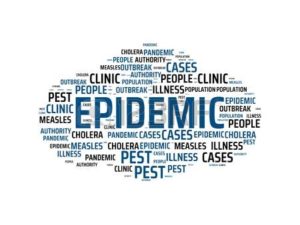
Over and over, I’ve witnessed the heartache of seeing patients lose so much vision that, they could no longer read, watch television, or drive, and not infrequently, they lost their independence. In some cases, I would sit and listen to my patients lament how they could no longer see their children and grandchildren’s faces. In short, the “golden years” became, “not so golden.”
Simple and expected daily visual tasks, such as reading a book or seeing one’s grandchild, are just a few of the things that we were obviously meant to enjoy in our later years. For most of us, we take it for granted, but for many, the new sneak thief of sight – AMD — gradually steals our precious gift of sight – and robs us of some of life’s greatest pleasures.
AMD is the leading cause of irreversible vision loss in the U.S. and other developed nations in people over the age of 65.[36]
This ugly and devastating disease is threatening to visually cripple and even blind tens of millions of people across the globe – needlessly. Researcher Dr. Donatella Pascolini, at the World Health Organization (WHO), in Switzerland, estimates that about 5 percent of global blindness is the result of AMD.[37] This translates into about two million people. But this is not just impaired vision – this is blindness. In eyecare terms, that means best-corrected visual acuity (with best glasses or contact lenses) of 20/200 or less in the U.S., or 20/400 (3/60) throughout much of the remainder of the world according to the World Health Organization definition.[38]
In 2002, the World Health Organization survey identified AMD as the leading cause of blindness in high-income countries.[39] These studies showed that 14 million people, or 8.7% of the world’s blindness and severe vision loss, was secondary to AMD. In the U.S., by 2004, 54% of blindness in whites was attributable to AMD.[40] In 2010, the WHO found AMD to be the third most common cause of blindness worldwide, ranking behind cataracts and glaucoma.[41] As of 2010, macular degeneration had replaced cataract as the most common cause of blindness in high-income regions.[42]
Albert & Jakobiec’s Principles and Practice of Ophthalmology asserts that as many as 15 million people in the U.S. were thought to have AMD, as of 1994. By my calculations, that number could be as high as 22 million as of 2015. However, the U.S. only represents about 4.5 percent of the world’s population, so the number of people with AMD worldwide is staggering (see below). Ron Klein, MD and colleagues at the University of Wisconsin, determined that AMD affects about one in three adults over the age of 75 in the United States, as of 1992.[43]
In 2014, researchers from the Singapore Eye Research Institute comprehensively evaluated the world’s AMD prevalence data, and estimated that some 196 million people worldwide will be afflicted with macular degeneration by year 2020, with that number projected to rise to 288 million people by 2040. For people between the ages of 45 and 85 years of age, this translates to 8.01% with early AMD, 0.37% with late AMD, and 8.69% with any degree of AMD.[44] Globally, this means that for those over age 50 years, about one person in every 11 has some degree of AMD.
Estimates of AMD prevalence aside, if you take into account the heartache, suffering, and vision loss that I’ve witnessed, and multiply it by 200,000, which is the approximate number of ophthalmologists (EyeMD’s) worldwide,[45] you get some sense of the colossal magnitude of this problem. Yet, this number doesn’t even take into account all of the patients that are being managed by optometrists. According to Primary Care Optometry News, there are more than 300,000 optometrists worldwide,[46] thereby totaling more than half a million total eye care providers globally, many of whom are literally overrun with AMD patients.
As practitioners, we’re also seeing the progression to advanced AMD at an alarming rate and, although wet AMD only represents about 10 to 20% of late AMD cases, if it is untreated it has a devastating visual prognosis. Untreated patients lose about 1 line of visual acuity (on the eye chart) at 3 months, nearly 3 lines at 12 months and 4 lines by 2 years. Those who develop severe vision loss (more than 6 lines lost on the eye chart) increase from 21.3% at 6 months to 41.9% at 3 years. Finally, those with vision 20/200 or worse (legally blind in the U.S.) at the initial exam increased from 19.7% to some 75.7% by 3 years. And for those who already have wet AMD in one eye, the fellow eye develops wet AMD in 12.2% of patients by 12 months and in 26.8% by 4 years.[47] One study showed that once advanced AMD developed in one eye, 43% developed advanced AMD in the other eye within five years.[48] And finally, for an individual with wet AMD in one eye, the risk of legal blindness in both eyes may be approximately 12% over a period of 5 years.[49]
Translation into real world vision terms: If you are affected by AMD and it degrades into the wet variety, without treatment your visual acuity is likely to be reduced by half (what ophthalmologists call a ‘doubling of the visual angle’) within the first year. In other words, if you start out at 20/40, you will be expected to be about 2/80 within a year, or if you start out at 20/100, you will be expected to be 20/200 within a year. Again, this is without treatment, but millions of people in the world have no access to treatment for this condition.
Human suffering aside, the financial costs to society are staggering. In his assessment of the problem based on statistics from Australia, Gregory S. Hageman, PhD, Professor of Ophthalmology and Visual Sciences at the University of Iowa Carver College of Medicine, states the following:
“A recent analysis of AMD in Australia predicts that the disease costs $2.6 Billion per year. This is projected to grow to $6.5 billion by 2025, a total cost of $59 billion over the next 20 years. A treatment that reduced the progression by only 10% would save Australia $5.7 billion over that same period of time. Similar analyses for the United States are lacking, but given the demographics and higher cost of medical care in the US, the costs would be projected to as much as twenty-fold higher.”[50]
 It’s Either Over-Simplified, or Overly Complex
It’s Either Over-Simplified, or Overly Complex
This book is written for everyone. And while I’ve tried my best to make it readable to those of you who have no medical or nutrition background at all, ophthalmologists, optometrists, and vision scientists may find that it’s lacking the detail they desire. My daughter, Kyla, currently seventeen and heading off to college next summer, once said to me, “Dumb it down, Dad.” With that said, I’ve tried to keep her advice and strike a happy medium. I hope you agree and can accept the limitations on either end of the spectrum.
Challenges to My Hypothesis…
I have no doubt that my position on AMD and its relationship to diet will be challenged. However, I will not be discredited for being non-scientific, as every major aspect of my entire hypothesis will be supported by fundamental scientific research. Every piece of data comes from third-party reliable and trusted sources. To be sure, I will be very clear as to when and where I draw any of my own conclusions. Finally, just so you’re aware — none of this book is based on opinion. Not mine. Not anyone’s. It is based on scientific fact, reason, and logic. Every single reference will be provided, right in the text. If you so desire, I invite you to do just as I have done. Go to each and every book, study, and reference, and review them for yourself. Then, see if you don’t arrive at the same conclusions that I have.
Chapter Summary
I have proffered the hypothesis that the ‘displacing foods of modern commerce’ are the primary and proximate cause of ‘age-related macular degeneration.’ The corollary to this is that any variety of ancestral diets, that is, diets that do not contain significant amounts of processed, nutrient-deficient, displacing foods – will not only prevent AMD, but may treat it as well.
I have witnessed the full reversal of early AMD in my own patients, in at least nine patients. However, those virtually all occurred without any advice from me. These were simply people that rather dramatically altered their diet in a healthful way, of their own volition. The key, though, is to begin as early as possible – and to be diligent.
If anything in this chapter seems complex, trust me, to put these plans into action is deceptively simple. Once we boil it all down and you practice putting these concepts into action for even a few days or weeks, making healthy food choices to virtually eliminate your risk of macular degeneration or to treat your existing macular degeneration, as well as a whole slew of other degenerative and inflammatory diseases, will very quickly become second nature.
References
- Jacobs DR and Steffen LM. Nutrients, foods, and dietary patterns as exposures in research: a framework for food synergy. Am J Clin Nutr. 2003; 78(3): 5085-5135. ↑
- Cordain, Loren. The Paleo Answer. Hoboken, New Jersey: John Wiley and Sons, Inc., 2012. ↑
- Egan KM, Seddon JM. (1994) Albert & Jakobiec: Principles and Practice of Ophthalmology. Basic Sciences (Philadelphia: W.B. Saunders Co.), p. 1273. ↑
- Mayo Clinic Staff. Mayo Clinic. Available at: http://www.mayoclinic.org/diseases-conditions/macular-degeneration/basics/risk-factors/con-20075882 ↑
- Age-Related Macular Degeneration Overview. WebMD.com: http://www.webmd.com/eye-health/macular-degeneration/age-related-macular-degeneration-overview ↑
- Duke-Elder, WS. Textbook of Ophthalmology. Vol. III, Diseases of the Inner Eye. St. Louis: The C.V. Mosby Company, 1941. p. 2373. ↑
- Egan KM, Seddon JM. (1994) Albert & Jakobiec Principles and Practice of Ophthalmology. Basic Sciences (Philadelphia: W.B. Saunders Co.), p. 1266. ↑
- Bressler SB, Bressler NM, Gragoudas ES. (1994) Albert & Jakobiec Principles and Practice of Ophthalmology. Vol. 2 Retina and Vitreous. Philadelphia: W.B. Saunders Co. p. 832-3. ↑
- Taubes, Gary. Why We Get Fat. (New York: Alfred A. Knopf, 2011) p. 9. ↑
- Wright, JD., et al. Trends in intake of energy and macronutrients – United States, 1971-2000. Feb 2004. MMWR Morb Mortal Wkly Rep 53 (4): 80-2. ↑
- Adams, KM, Lindell KC, et al. Status of nutrition education in medical schools. Am J Clin Nutr. 2006 Apr; 83(4): 941S-944S. ↑
- Ibid. ↑
- Chen, Pauline W. “Teaching Doctors About Nutrition and Diet.” The New York Times. Sep. 16, 2010. Available at: http://www.nytimes.com/2010/09/16/health/16chen.html ↑
- Ibid. ↑
- “How Much Does the U.S. Spend on Health and How Has It Changed?” The Henry J. Kaiser Family Foundation. May 1, 2012. Available at: http://kff.org/report-section/health-care-costs-a-primer-2012-report/ ↑
- Murray CJL, Frank J. Ranking 37th – Measuring the Performance of the U.S. Health Care System. N England J Med. 2010; 362: 98-99. ↑
- Moyer, Christine S. “U.S. found to be unhealthiest among 17 affluent countries.” American Medical News. Jan. 21, 2013. Available at: http://www.amednews.com/article/20130121/health/130129983/4/ ↑
- Khan, A. America Tops List of 10 Most Obese Countries. U.S. News & World Report. May 28, 2014. Available at: http://health.usnews.com/health-news/health-wellness/articles/2014/05/28/america-tops-list-of-10-most-obese-countries ↑
- Grundy SM, Brewer HB, et al. Definition of Metabolic Syndrome. Circulation 2004; 109: 433-38. ↑
- Lustig, Robert H. FAT CHANCE – Beating the Odds Against Sugar, Processed Food, Obesity, and Disease. New York: Hudson Street Press, 2013. p. 93. ↑
- Beltran-Sanchez H, Harhay MO, et al. Prevalence and Trends of Metabolic Syndrome in the Adult U.S. Population, 1999-2010. J American College of Cardiology. Aug 20, 2013. 62 (8): 697-703. ↑
- Cheung N, Wong TY. Obesity and eye diseases. Surv Ophthalmol. 2007; 52(2): 180-95. ↑
- Peeters A, Magliano DJ, et al. Changes in abdominal obesity and age-related macular degeneration; the Atherosclerosis Risk in Communities Study. ↑
- Schaumberg DA, Christen WG, et al. Body mass index and the incidence of visually significant age-related maculopathy in men. Arch Ophthalmol. 2001; 119(9): 1259-65. ↑
- Klein R, Peto T, et al. The epidemiology of age-related macular degeneration. Am J Ophthalmol. 2004; 137(3): 486-495. ↑
- Katsi VK, Marketou ME, et al. Essential hypertension in the pathogenesis of age-related macular degeneration: a review of the current evidence. J Hypertens. 2015; 33(12): 2382-8. ↑
- Sun C, Klein R, Wong TY. Age-related macular degeneration and risk of coronary heart disease and stroke: the Cardiovascular Health Study. Ophthalmology. 2009; 116(10): 1913-1919. ↑
- Tan JS, Mitchell P, et al. Cardiovascular risk factors and the long-term incidence of age-related macular degeneration: the Blue Mountains Eye Study. Ophthalmology. 2007; 114(6): 1143-1150. ↑
- Klein R, Deng Y, Klein BE, et al. Cardiovascular disease, its risk factors and treatment, and age-related macular degeneration: Women’s health initiative sight exam ancillary study. Am J Ophthalmol. 2007; 143(3): 473-483. ↑
- Clemons TE, Milton RC, Klein R, Seddon JM, Ferris FL 3rd. Risk factors for the incidence of Advanced Age-Related Macular Degeneratino in the Age-Related Eye Disease Study (AREDS) AREDS report no. 19. Ophthalmology. 2005: 112: 533-539. ↑
- Hahn P, Acquah K, Cousins SW, et al. Ten-Year Incidence of Age-Related Macular Degeneration According to Diabetic Retinopathy Classification Among Medicare Beneficiaries. Retina. 2013; 33: 911-919. ↑
- Mitchell P, Wang JJ. Diabetes, fasting blood glucose and age-related maculopathy: The Blue Mountains Eye Study. Aust N Z J Ophthalmol. 1999; 27: 197-99. ↑
- Topouzis F, Anastasopoulos E, et al. Association of diabetes with age-related macular degeneration in the EUREYE study. Br J Ophthalmol. 2009; 93: 1037-1041. ↑
- Seddon JM, Gensler G, Milton RC, et al. Association between C-reactive protein and age-related macular degeneration. JAMA. 2004; 291(6): 704-710. ↑
- Maralani HG, Tai BC, Wong TY, et al. Metabolic syndrome and risk of age-related macular degeneration. Retina. 2015; 35(3): 459-66. ↑
- Van Bol L, Rasquin F. [Age-related macular degeneration]. Rev Med Brux. 2014; 35(4): 265-70. ↑
- Pascolini D, Mariotti SP. Global estimates of visual impairment: 2010. Br. J Ophthalmol 2012; 96: 614-618. ↑
- The prevention of blindness. Report of a WHO Study Group. Geneva. World Health Organization, 1980 (WHO Offset Publication No. 54). ↑
- Resnikoff S, Pascolini D, Etya’ale D, et al. Global data on visual impairment in the year 2002. Bulletin of the World Health Organization. 2004; 82: 844-851. ↑
- Congdon N, O’Colmain B, et al. Causes and prevalence of visual impairment among adults in the United States. Arch Ophthalmol. 2004; 122(4): 477-485. ↑
- Pascolini D, Mariotti SP. Global estimates of visual impairment: 2010. Br J Ophthalmol. 2011; 96: 614-618. ↑
- Bourne RRA, Jonas JB, et al. Prevalence and causes of vision loss in high-income countries and in Eastern and Central Europe: 1990-2010. Br J Ophthalmol. 2014; 0: 1-10. ↑
- Klein R, Klein BE, Linton KL. Prevalence of age-related maculopathy. The Beaver Dam Eye Study. Ophthalmology. 1992; 99: 933-943. ↑
- Wong WL, Su X, et al. Global prevalence of age-related macular degeneration and disease burden projection for 2020 and 2040: a systematic review and meta-analysis. Lance Glob Health. 2014; 2: e106-16. ↑
- The number of ophthalmologists in practice and in training worldwide; a growing gap despite more than 200,000 practitioners. International Council of Ophthalmology. Jun 1, 2012, Available at: http://www.icoph.org/resources/271/The-number-of-ophthalmologists-in-practice-and-in-training-worldwide-a-growing-gap-despite-more-than-200000-practitioners.html ↑
- Global need for vision care indicates need for more optometrists. Primary Care Optometry News. Aug. 2012. Available at: http://www.healio.com/optometry/primary-care-optometry/news/print/primary-care-optometry-news/%7B5dee8831-92d1-49bf-9108-f8457cd4cf6e%7D/global-need-for-vision-care-indicates-need-for-more-optometrists ↑
- Wong TY, Chakravarthy U, Klein R, et al. The natural history and prognosis of neovascular age-related macular degeneration: a systemic review of the literature and meta-analysis. Ophthalmology. 2008; 115(1): 116-26. ↑
- Age-Related Eye Disease Study Research Group. A randomized, placebo-controlled, clinical trial of high-dose supplementation with vitamins C and E, beta carotene, and zinc for age-related macular degeneration and vision loss: AREDS report no. 8. Arch Ophthalmol. 2001; 119: 1417-1436. ↑
- Risk factors for choroidal neovascularization in the second eye of patients with juxtafoveal or subfoveal choroidal neovascularization secondary to age-related macular degeneration: Macular Photocoagulation Study Group. Arch Ophthalmol. 1997; 115: 741-747. ↑
- Hageman, Gegory S. Age-Related Macular Degeneration (AMD) by Gregory S. Hageman. Webvision. Available at: http://webvision.med.utah.edu/book/part-xii-cell-biology-of-retinal-degenerations/age-related-macular-degeneration-amd/ ↑




